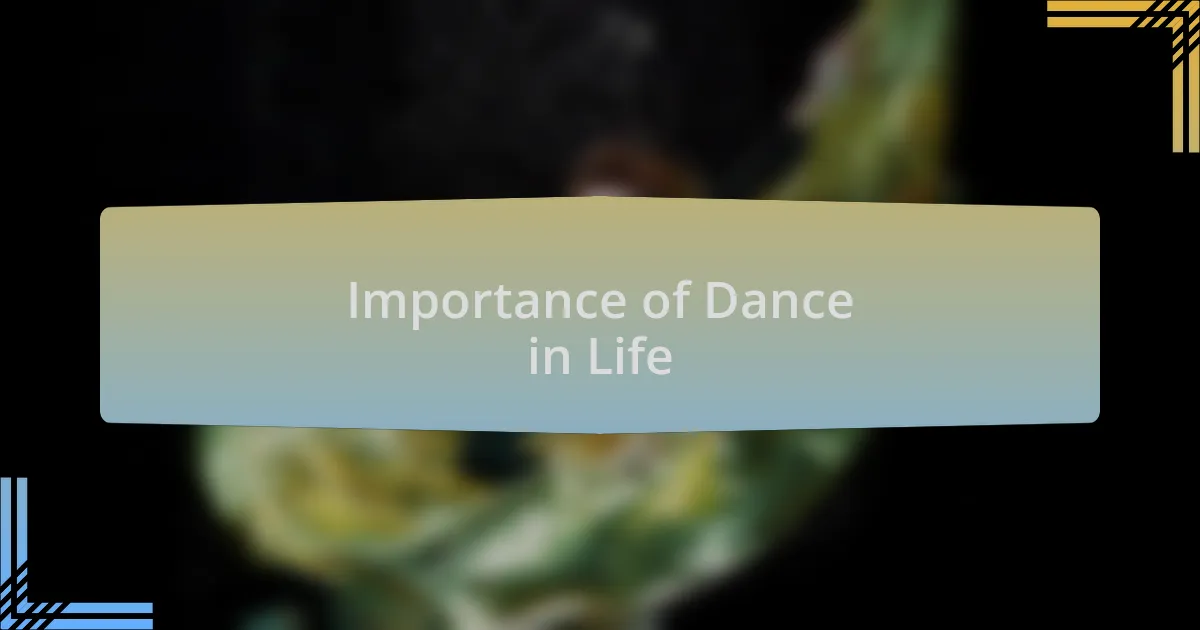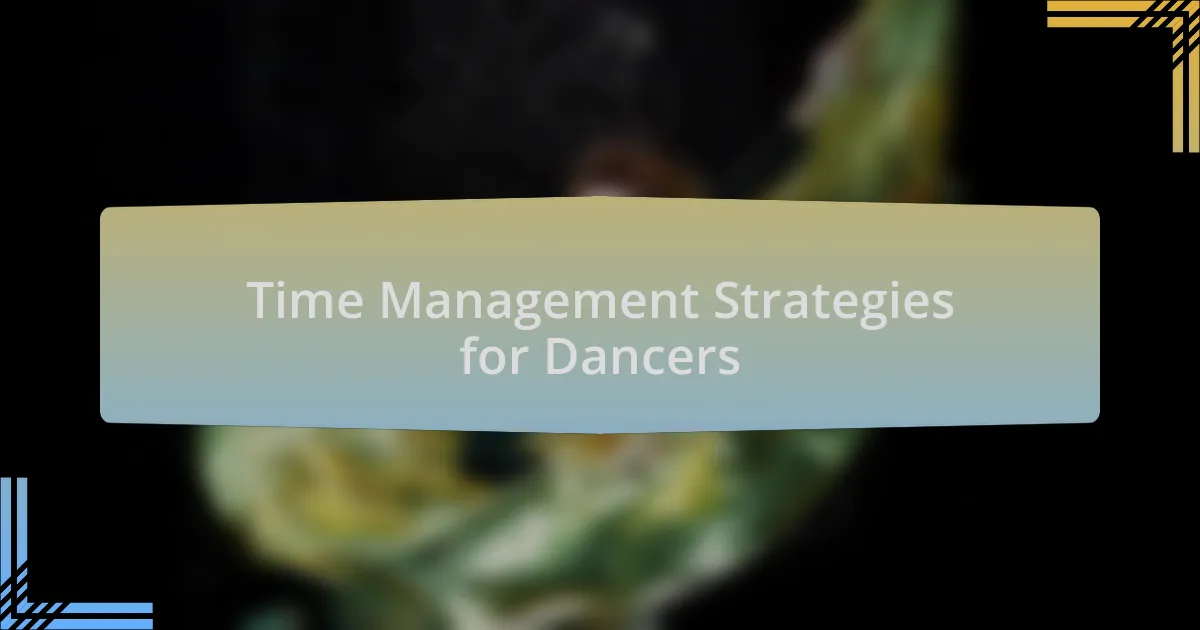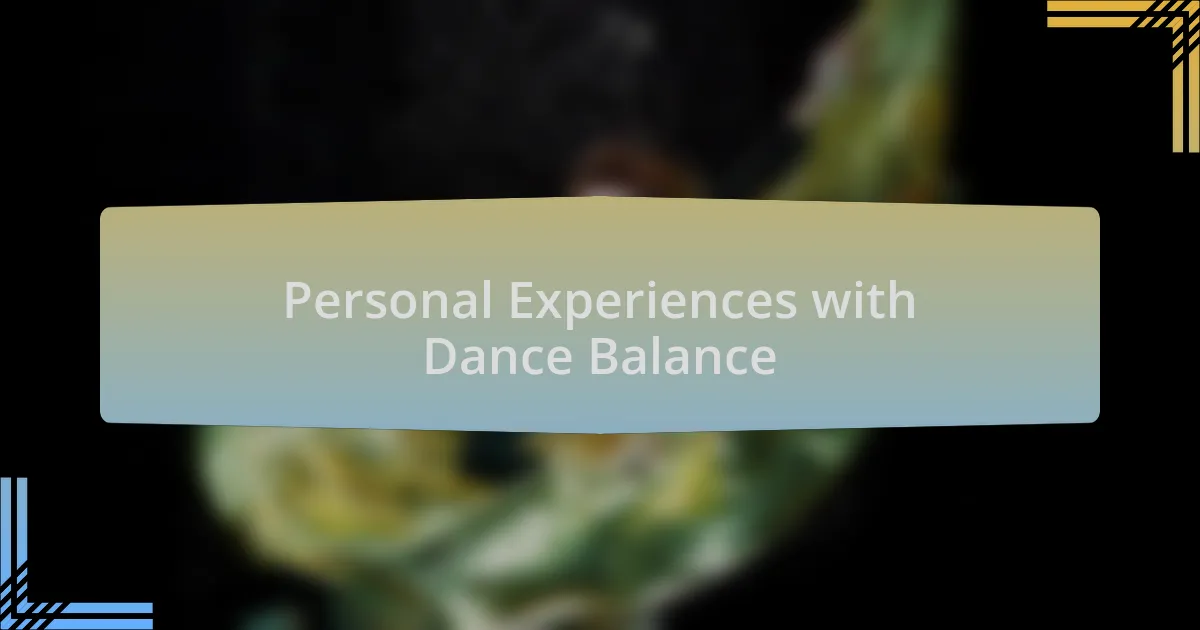Key takeaways:
- Classical Chinese Dance blends storytelling with movement, expressing deep emotions through meaningful gestures.
- Dance serves as an outlet for self-expression, enhances mental and physical well-being, and fosters community connections.
- Effective time management, including setting priorities and allowing for breaks, is crucial for balancing dance with other commitments.
- Personal experiences highlight the importance of emotional balance and mindfulness in enhancing performance and maintaining passion.

Introduction to Classical Chinese Dance
Classical Chinese Dance, with its deep historical roots, artfully blends storytelling with intricate movements. I remember the first time I witnessed a performance; the graceful leaps and flowing hand movements took me on a journey through a rich tapestry of culture and history. Have you ever felt transported to another time and place just by watching a dance?
At its core, this dance form expresses profound emotions and philosophical ideas, allowing performers to connect with the audience on a visceral level. When I first learned about the significance of each gesture, it became clear that every movement carries meaning, reflecting both character and story. It’s fascinating how a simple hand position can convey a wide range of feelings, making the dance feel both personal and universal.
Furthermore, the training involved is rigorous and disciplined, requiring both dedication and passion. I recall pushing through those early mornings, feeling the joy of improvement, even when the physical demands were exhausting. Can you imagine the satisfaction of witnessing your own growth in a dance form that spans thousands of years? The journey in Classical Chinese Dance is not just about mastering techniques; it’s about embracing an art form that resonates deeply with who we are.

Importance of Dance in Life
Dance holds a significant position in our lives, serving as an outlet for self-expression and creativity. I recall a challenging day when I took to the studio; the moment I began to move, my worries started to drift away. Have you ever noticed how dance can transform your mood, almost like a therapy session wrapped in rhythm and movement?
Incorporating dance into everyday life also fosters a sense of community. During group rehearsals, I always felt a surge of belongingness. The laughter, shared struggles, and triumphs unite people in a way that few other activities can. Can you think of a moment when you’ve connected with others through a shared passion?
Beyond its social aspects, dance can enhance physical and mental well-being. I have experienced firsthand how the discipline of dance not only strengthens the body but also sharpens the mind. Each practice improves my focus and resilience, qualities that extend far beyond the dance floor. Isn’t it fascinating how a dance class can set the tone for an entire day, infusing resilience into every challenge we face?

Time Management Strategies for Dancers
Finding balance as a dancer often comes down to effective time management. One strategy I’ve found particularly useful is creating a weekly schedule that allocates specific time slots for practice, rest, and personal commitments. When I committed to this routine, I noticed a remarkable reduction in stress, allowing me to immerse myself in each activity without feeling overwhelmed. Have you ever tried mapping out your week—how did it feel to visualize your time?
Setting priorities is another essential component. I learned the hard way that trying to do everything at once leads to burnout. During a particularly busy performance season, I focused on my dance classes and streamlined other obligations, which helped me pour my heart into each movement without distraction. How do you determine what absolutely must be done versus what can wait?
Lastly, don’t underestimate the power of downtime. In my experience, allowing myself guilt-free breaks has not only rejuvenated my spirit but also made my dance practice more productive. Have you noticed how sometimes stepping back can provide clarity? Creating micro-breaks can help you return to your passion with renewed energy and creativity, ensuring you remain both disciplined and inspired.

Personal Experiences with Dance Balance
Finding balance in dance has been a journey of self-discovery for me. I vividly remember a time when I was preparing for a major performance while simultaneously juggling academic commitments. I felt torn; every pirouette called out to me, yet so did my coursework. It was challenging. Gradually, I learned to prioritize my practice without neglecting my studies, which taught me that, often, our passions can coexist harmoniously if we allow them to.
One unforgettable rehearsal stands out. It was late at night, and I was exhausted. I almost skipped it, but I pushed myself to attend. That night, I finally nailed a difficult sequence that had been haunting me for weeks. The exhilaration of overcoming that hurdle was transformative. Have you experienced a moment when pushing through fatigue led to unexpected breakthroughs? For me, it reinforced the power of balance in pursuing my art amidst life’s demands.
Emotional balance has also played a crucial role in my dance journey. There have been days when the weight of responsibility felt too heavy, leading to frustration in my movements. I started incorporating mindfulness techniques, focusing on my breath and present feelings before practice. This shift allowed me to channel my emotions positively into my dance. How often do we take the time to acknowledge our feelings before stepping on stage? Embracing those moments of vulnerability has not only refined my performance but enriched my passion for dance itself.